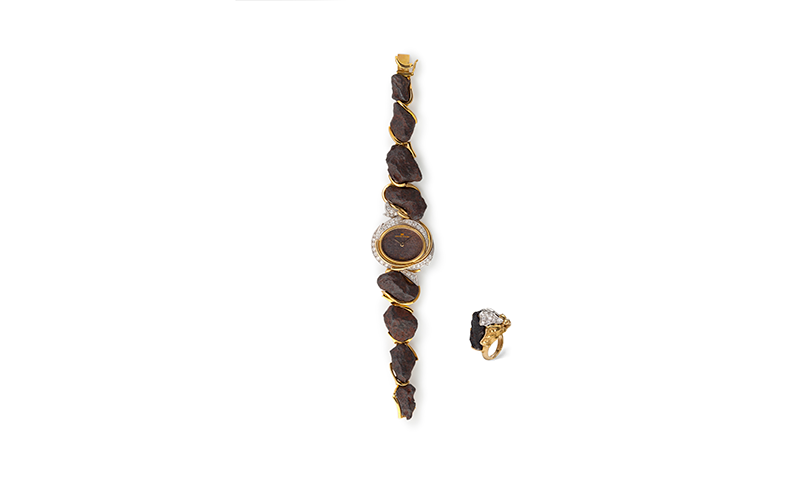- Events & Programs Home
- Calendar
- Accessibility
- Adults
-
Families & Teens
- Families & Teens Home
- 10x10 Teen Art Expo
- Art on the Rise
- Art Together: Art Making for Families with Children Ages 3–5
- Babies Sing with May Festival Minis
- Boy Scouts / Girl Scouts
- CAM Kids Day
- Family Storytime and Gallery Walk
- Family Studio: Art Making for Families with Children Ages 6–12
- Games in the Galleries
- Members-Only Baby Tours
- Public Baby Tours
- REC Reads
- Rosenthal Education Center (REC)
- Saturday Morning Art Class
- See Play Learn Kits
- Summer Camp
- Teen Fest: Zine and Comic Exchange
- RECreate
- Teachers
- Community Outreach
- Fundraisers
- Plan Your Own Event

- Events & Programs Home
- Calendar
- Accessibility
- Adults
-
Families & Teens
- Families & Teens Home
- 10x10 Teen Art Expo
- Art on the Rise
- Art Together: Art Making for Families with Children Ages 3–5
- Babies Sing with May Festival Minis
- Boy Scouts / Girl Scouts
- CAM Kids Day
- Family Storytime and Gallery Walk
- Family Studio: Art Making for Families with Children Ages 6–12
- Games in the Galleries
- Members-Only Baby Tours
- Public Baby Tours
- REC Reads
- Rosenthal Education Center (REC)
- Saturday Morning Art Class
- See Play Learn Kits
- Summer Camp
- Teen Fest: Zine and Comic Exchange
- RECreate
- Teachers
- Community Outreach
- Fundraisers
- Plan Your Own Event
Watch and Ring by Augustin Julia-Plana
Watch and Ring by Augustin Julia-Plana
- Home
- Plan Your Visit
- Art
-
Events & Programs
- Events & Programs Home
- Calendar
- Accessibility
- Adults
-
Families & Teens
- Families & Teens Home
- 10x10 Teen Art Expo
- Art on the Rise
- Art Together: Art Making for Families with Children Ages 3–5
- Babies Sing with May Festival Minis
- Boy Scouts / Girl Scouts
- CAM Kids Day
- Family Storytime and Gallery Walk
- Family Studio: Art Making for Families with Children Ages 6–12
- Games in the Galleries
- Members-Only Baby Tours
- Public Baby Tours
- REC Reads
- Rosenthal Education Center (REC)
- Saturday Morning Art Class
- See Play Learn Kits
- Summer Camp
- Teen Fest: Zine and Comic Exchange
- RECreate
- Teachers
- Community Outreach
- Fundraisers
- Plan Your Own Event
- Give & Join
- About
- Tickets
- Calendar
- Exhibitions
- Collections
- Blog
- Shop
- Art
- Exhibitions
- What, Me Worry? The Art and Humor of MAD Magazine
- Recall. Reframe. Respond. The Art of Paul Scott
- Rediscovered Treasures
- Special Features
- Upcoming Exhibitions
- Past Exhibitions
- Online Exhibitions
- Explore the Collection
- Provenance and Cultural Property
- Conservation
- Meet the Curators
- Digital Resources
- Art Bridges Cohort Program

Augustin Julia-Plana (Spanish, worked in Switzerland, active 20th century), Watch and Ring, 1978, gold, platinum, meteorite, diamonds
Audio Description
This watch and ring were made in 1978 by Spanish jeweler Augustin Julia-Plana. He was active in the 20th century and worked in Switzerland. It is constructed of gold, platinum, meteorite and diamonds.
The watchband of this timepiece is made up of dark, rusty brown pieces of a meteorite that look like rocks. They are surrounded on varying sides by polished yellow gold. The face of the watch is made of dark colored meteorite. The hands are also dark and there are no numbers on the face. The watch face is oval and surrounded by a polished circle of gold, then overlapping semi-circles of gold, and rows of small, faceted diamonds. The central focus of the ring is a dark piece of meteorite that is overlaid with an irregular shape of small, faceted diamonds and a raised and textured lip of gold on one side.
Label Copy
This watch and ring were made in 1978 by Spanish jeweler Augustin Julia-Plana. He was active in the 20th century and worked in Switzerland. It is constructed of gold, platinum, meteorite and diamonds.
Augustin Julia-Plana was known for using singular materials in his work, such as wood, ivory, coral, and oxidized or rusted iron, from which he drew inspiration. In this jeweler’s eyes, it was not the market value of the individual elements that determined worth, but the innate beauty of the jewelry itself. Unhurried in his approach, Julia-Plana might wait for years to find the components needed to complete a design.
Fragments of meteorite were combined with gold and small faceted diamonds to construct this watch and ring. Although not a matching set, they are both from a late 1970s collection. Each of Julia-Plana’s pieces of jewelry were as unique as the materials used to create them. With only 25 artisans in his workshop, the rare quality of each work was preserved. Partnering with watchmaker Simon Schlegel in 1963, both felt this high degree of exclusivity and individuality was paramount.
Back to Materials, Texture, Sculpture Back to the Audio Exhibition
Cincinnati, OH 45202
Toll Free: 1 (877) 472-4226
Museum Hours
Museum Shop
Terrace Café
Library
Cincinnati Art Museum is supported by the tens of thousands of people who give generously to the annual ArtsWave Campaign, the region's primary source for arts funding.

Free general admission to the Cincinnati Art Museum is made possible by a gift from the Rosenthal Family Foundation. Exhibition pricing may vary. Parking at the Cincinnati Art Museum is free.
Generous support for our extended Thursday hours is provided by Art Bridges Foundation’s Access for All program.

General operating support provided by:



